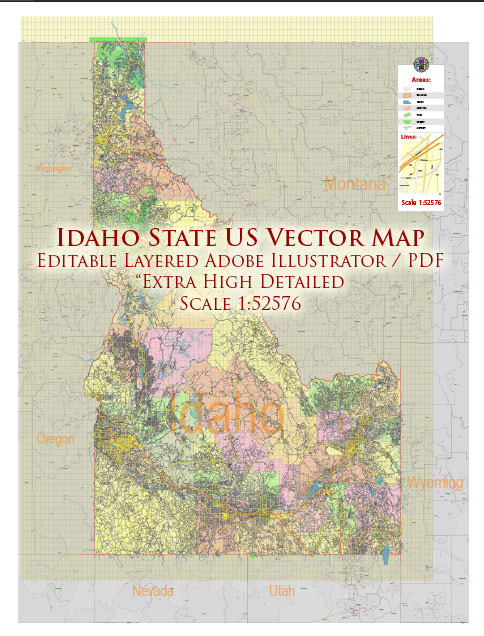Idaho’s urban development history is marked by a combination of natural resource exploitation, agricultural growth, and urbanization. The state’s development has been shaped by its diverse geography, which includes mountains, forests, and fertile valleys. While Idaho is known for its rural landscapes and natural beauty, it also has urban centers that have played crucial roles in the state’s history.
- Early Settlements: The first urban developments in Idaho can be traced back to the mid-19th century during the Gold Rush era. Towns like Idaho City and Placerville grew rapidly as prospectors flocked to the area in search of riches. These early settlements were often characterized by temporary structures, reflecting the transient nature of the population.
- Railroads and Agriculture: The late 19th and early 20th centuries saw the expansion of railroads across Idaho, connecting remote areas to urban centers. This facilitated the transportation of agricultural products, particularly potatoes, which became a significant industry in the state. Boise, the capital and largest city, benefited from its strategic location along transportation routes.
- Boise’s Growth: Boise, situated along the Boise River in the southwestern part of the state, emerged as a key urban center. The city’s growth was influenced by factors such as agriculture, government activities, and the development of industries like lumber and mining. Over time, Boise evolved into a regional hub for commerce and government.
- World War II and Post-War Era: The mid-20th century brought changes to Idaho’s urban landscape, influenced in part by World War II. The state experienced an economic boost due to wartime industries and the presence of military bases. After the war, urban areas continued to grow as returning veterans settled in cities and towns.
- Suburbanization and Population Growth: Like many parts of the United States, Idaho experienced suburbanization in the latter half of the 20th century. The development of the interstate highway system further connected urban centers and contributed to the growth of suburban communities around cities like Boise and Idaho Falls.
- Technology and Economic Diversification: In recent decades, Idaho’s urban development has been influenced by the technology sector. Cities like Boise have seen a surge in technology-related industries, attracting a more diverse population. The state’s economic base has expanded beyond agriculture and natural resource extraction.
- Cultural and Recreational Development: The presence of natural attractions, including national parks and outdoor recreational opportunities, has also influenced urban development. Cities in Idaho have sought to balance economic growth with environmental preservation, promoting a lifestyle that values outdoor activities.
- Challenges and Opportunities: While urban areas in Idaho have experienced growth and economic development, they also face challenges such as infrastructure demands, affordable housing issues, and the need for sustainable development. Balancing the state’s economic interests with environmental conservation continues to be a consideration in urban planning.
In summary, Idaho’s urban development history reflects a blend of factors, including resource exploitation, agriculture, transportation, and more recently, technological growth. The state’s cities have evolved from mining and agricultural hubs to diverse urban centers with a mix of industries and a focus on preserving the natural beauty that defines Idaho.


 Author: Kirill Shrayber, Ph.D.
Author: Kirill Shrayber, Ph.D.